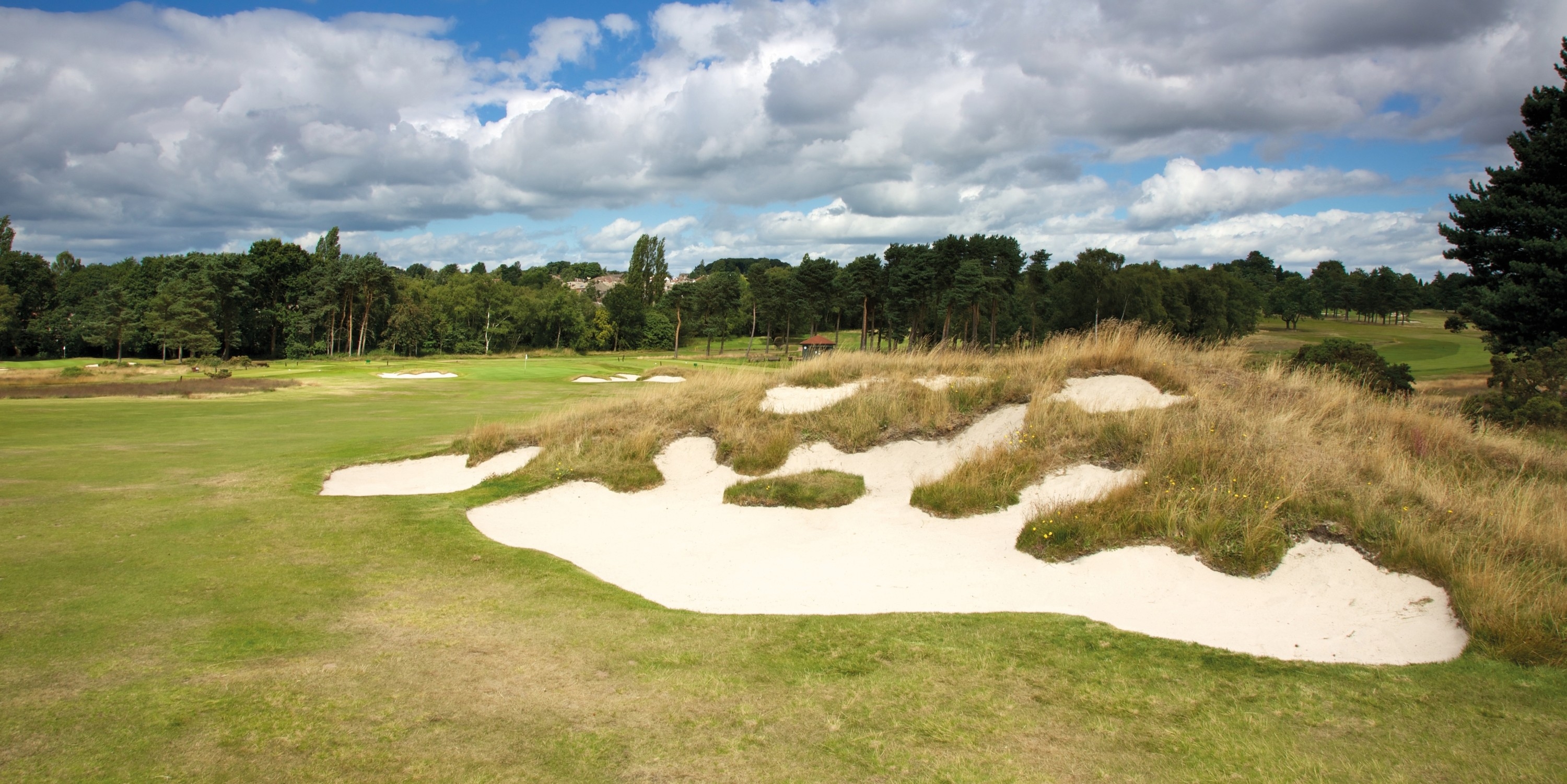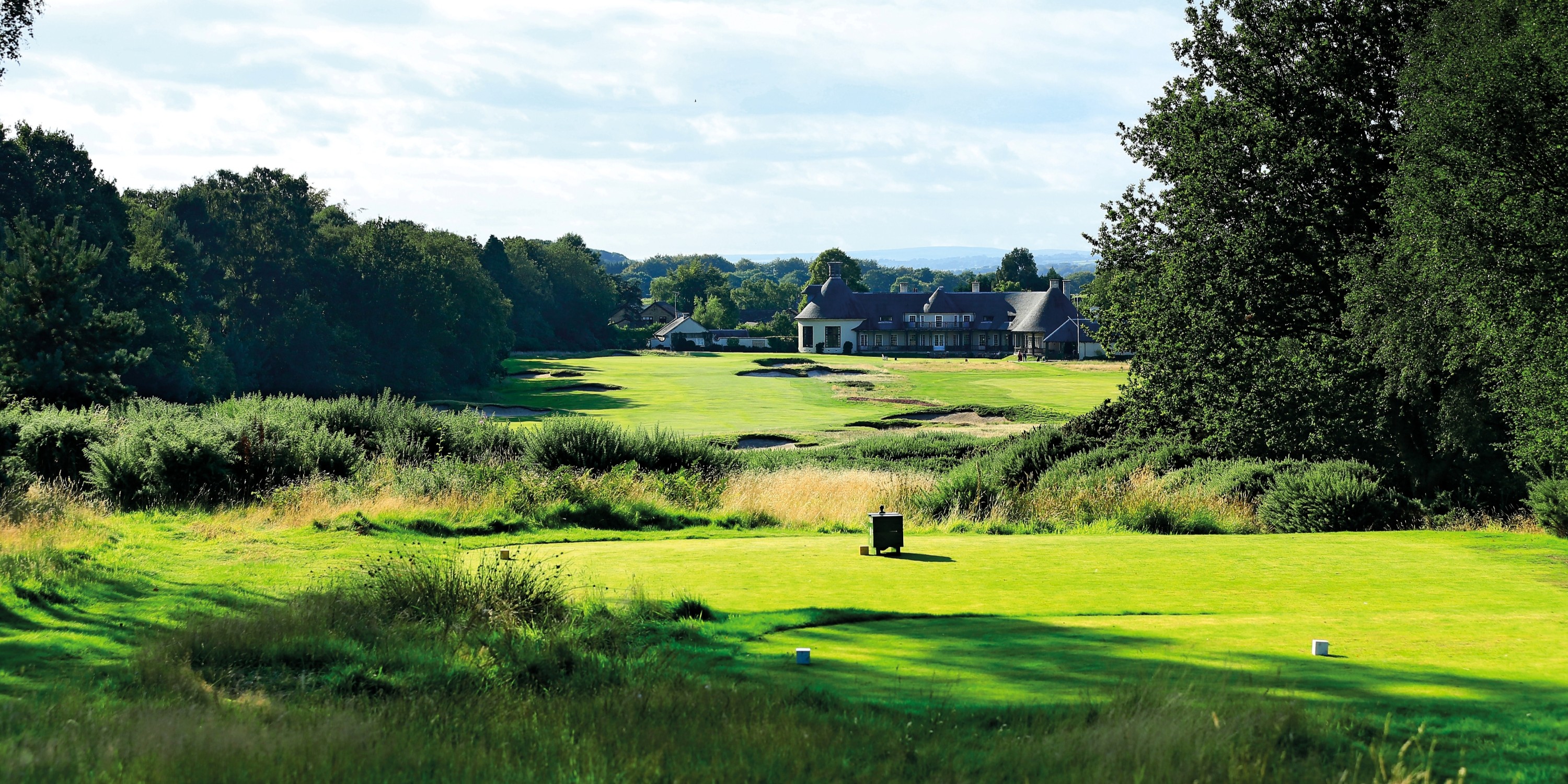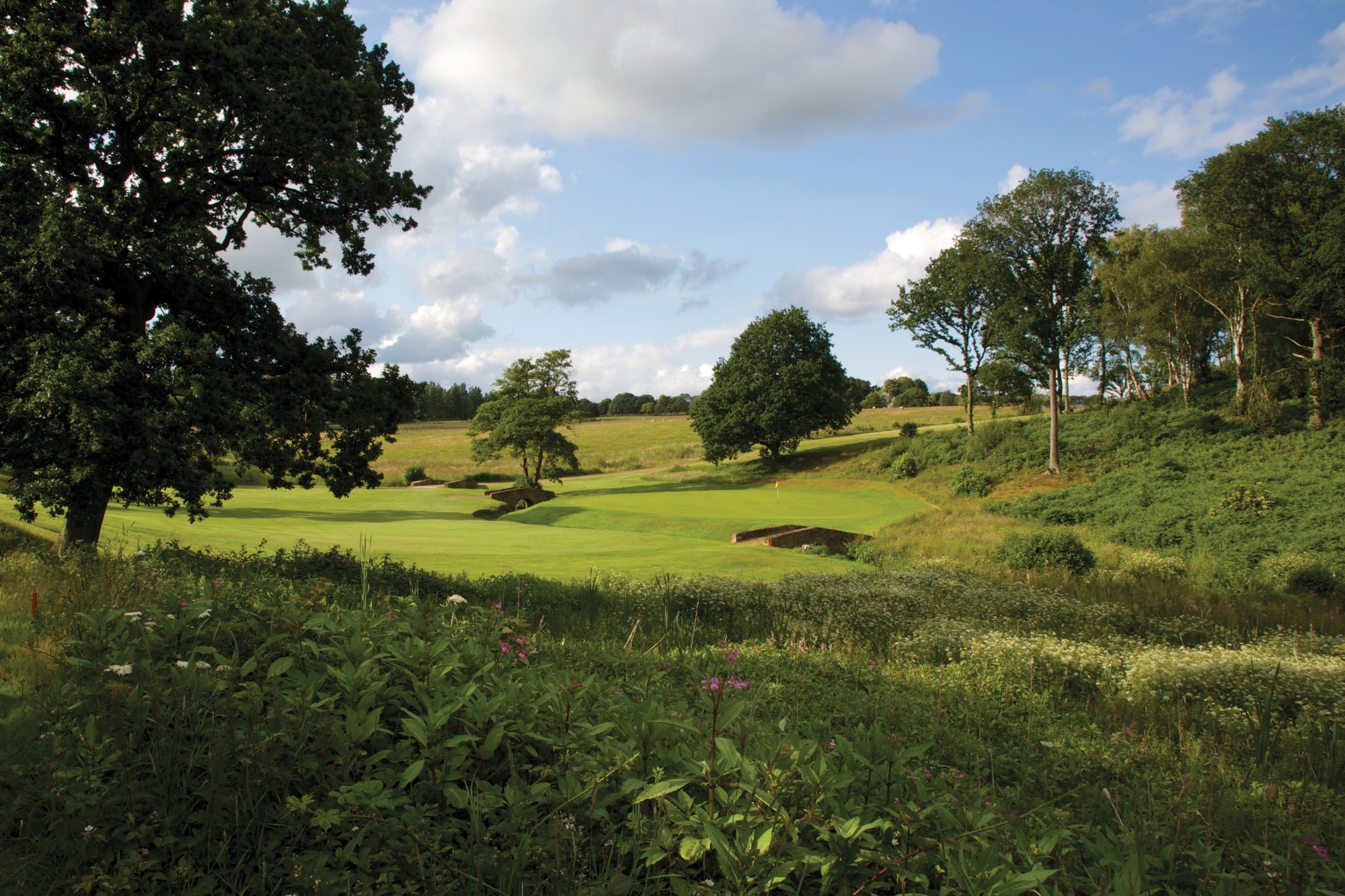
Sand Moor
Sand Moor | NCG Top 100s : Yorkshire Golf Courses
Rankings
8th
128th
311th
Sand Moor is one of several courses just to the north of Leeds, all of which were shaped by the hand of the great Dr Alister MacKenzie.
Situated within five miles of Yorkshire's largest city, Sand Moor was founded in 1926, with MacKenzie designing the original layout.
Henry Cotton added four new holes in the 1960s after the club bought more land.
Today, the course runs towards Eccup Reservoir and offers views towards the Yorkshire Dales in the distance.
Visit Sand Moor’s website here.
Go Back To NCG's Top 100s Homepage.
Advertisement

A Brief History of Sand Moor Golf Club
Golf was first played on this land in 1921, but it was five years later when the Sand Moor Golf Club was officially founded.
Dr Alister MacKenzie – the designer of nearby Alwoodley, which is less than a mile away – was the man who shaped the 18-hole layout at Sand Moor. He would also become the club’s first Vice President, a role he held for five years.
In 1969, the club purchased more land, with the aim of keeping the course on one side of the road. Four new holes were added, with Henry Cotton advising the club on the design.
The 1980s saw the hosting of the Car Care Plan International, with Sir Nick Faldo being the victor for the second year in succession, in 1983, after winning at Moor Allerton a year previously.
Sand Moor Golf Club Review | NCG Top 100s: England
Advertisement

Sand Moor is one of the most attractive courses in Yorkshire. There are splendid views over Eccup Reservoir and the Yorkshire Dales, and as far as the White Horse on the North York Moors. Sand Moor is most notable for its quite outstanding collection of par 3s. There are four in total, and all call for something slightly different. What they have in common is the ability to ruin your scorecard and simultaneously make you want to return to the tee and play them again. Off the back tees, this par-71 layout is almost 6,400 yards.
Your first shot of the day is a blind one, on the opening par 5. The ideal line is slightly left of the marker post which sits on the brow of the hill, while the approach – whether it is your second or third shot – is to a green protected by three bunkers. You then come to a run of six consecutive par 4s, all of which offer different challenges due to Sand Moor's undulating terrain.
The 2nd is a short, dogleg left. At just 250 yards, big hitters might take it on over the trees, but the safe play for the mere mortals among us is to play out to the fat part of the fairway on the right before knocking your second on to the green. The 3rd also turns to the left, but nowhere near as much as it does on 2. Aim down the left side of the fairway as the short grass cambers towards the two bunkers on the right side. The green sits way below the level of the fairway, so take a club less than the yardage to avoid going into the out of bounds area beyond the green.
The tee shot on 4 plays back up the slope, and a drive over the marker post is perfect. The approach on this 370-yard par 4 is a to a green that is diagonally angled to the fairway, with a back flag over the bunker being the trickiest pin position. The 5th also plays uphill, and you need to avoid the three fairway bunkers down the right side off the tee. Four more traps are then in view, with three of those protecting a narrow putting surface. At 465 yards, the 6th is the longest par 4 on the property, but it does play from an elevated tee box. The hole works round to the right, with two bunkers on the left edge of the fairway – the outside corner of the turn. There are three more traps by the green to stop you running the ball up to the surface. The last of the run of par 4s comes at the 7th – a hole that first goes downhill off the tee before rising back up to the green. The approach will play at least a club longer than its yardage.
The first par 3 comes at the 8th. It plays slightly downhill, but it still requires a very good shot. At 180 yards, it is not the longest par 3, but due to the width of the green, it is a difficult approach shot. The front nine concludes with an uphill par 4 that winds its way round to the right. The line off the tee is down the right side of the fairway as the camber will take the ball away to the left. Two traps guard the putting surface. 10 is less than 170 yards, but it is one of the hardest holes on the course due to how small the green is. Add in that there are five bunkers surrounding the putting surface, and you have a cracking short hole. Playing from an elevated tee, the longer hitters can try and drive it past the bunkers on 11, but for most, a tee shot down the left side is ideal. From there, the approach is played to a green that slopes from back to front and from left to right.
The 12th is one of two par 5s on the back nine at Sand Moor, and features thick trees and OOB down the right side. The fairway leans from left to right so hit your drive up the left side of the fairway. Think about whether going for it with your second is right option, with three bunkers awaiting anything that is slightly offline. At 330 yards, driver might not necessarily be the play on 13. Knock a long iron or fairway wood to the flat at the top of the hill, before hitting a low iron or wedge to the green that sits slightly below you. 14 is the Stroke Index 1 – a 450-yard par 4. It does have a wide fairway, which allows you to go after it with the driver, but it gets narrower towards the green, with four bunkers in play by the putting surface.
The closing stretch begins with the shortest hole on the course, and one of two par 3s in the last four holes. 15 is only 160 yards, but the green is extremely narrow, and guarded by two bunkers. The other short hole comes at 17, and it is another that is played to a small target. Middle of the green on both of these will do you well, especially if you are looking to keep hold of a good score on your way in. The 16th is the longest hole on the course at 545 yards, and it is a dog-leg left. Aim down the left side with your tee shot as the fairway slopes from left to right. It is then downhill towards the green, but anyone laying up should be looking to keep their second shots short of the bunkers on the left side. The closing hole at Sand Moor sees a tee shot played to the top of the brow, making the hole seem much longer than it actually is. You might not be able to see the top of the flag, but there is a marker pole behind the green for reference. It is definitely a tricky finish if you have never played it before.
FAQs about Sand Moor Golf Club
Where is Sand Moor Golf Club located?
Sand Moor Golf Club is located to the north of the city of Leeds in West Yorkshire. The city centre of Leeds is only five miles from the golf club, while the northern boundary of the course is next to Eccup Reservoir. The club sits just off the A61, which runs north from the centre of Leeds to Thirsk via Harrogate.
For international travellers, Leeds Bradford Airport is just seven miles from Sand Moor, while Manchester Airport – the busiest airport in the United Kingdom outside of London – is 60 miles away to the southwest. Horsforth is the closest train station to the golf club, with regular services running to Knaresborough, York and Leeds, along with an hourly service to London Kings Cross. Leeds Station provides a much wider range of services and destinations, and is still only five miles from the golf club.
Are there any NCG Top 100s: England venues nearby?
Within a mile of Sand Moor sit two of Yorkshire’s finest, both of which are on the NCG Top 100s: England list. Both Alwoodley and Moortown are in the same part of Leeds, and offer up a great three-day trip for golfers. Fulford is only 25 miles to the east, while Lindrick is 50 miles to the south.
What golf facilities does Sand Moor Golf Club offer?
Along with the glorious championship course, Sand Moor also has its own driving range with both covered and open-air teeing areas, along with a short game area that has a pair of practice bunkers. The putting green sits between the clubhouse and the 1st tee, and gives a final chance to get yourself ready before you take to the course.
What are the green fees at Sand Moor Golf Club?
The price of a green fee at Sand Moor Golf Club changes throughout the year, depending on the season. It is also different depending on whether it is a weekday or weekend.
For more information on current green fees at Sand Moor, visit their website here.
Visit Sand Moor’s website here.
Go Back To NCG's Top 100s Homepage.
Advertisement

Course Reviews

0.0 | 0 reviews



